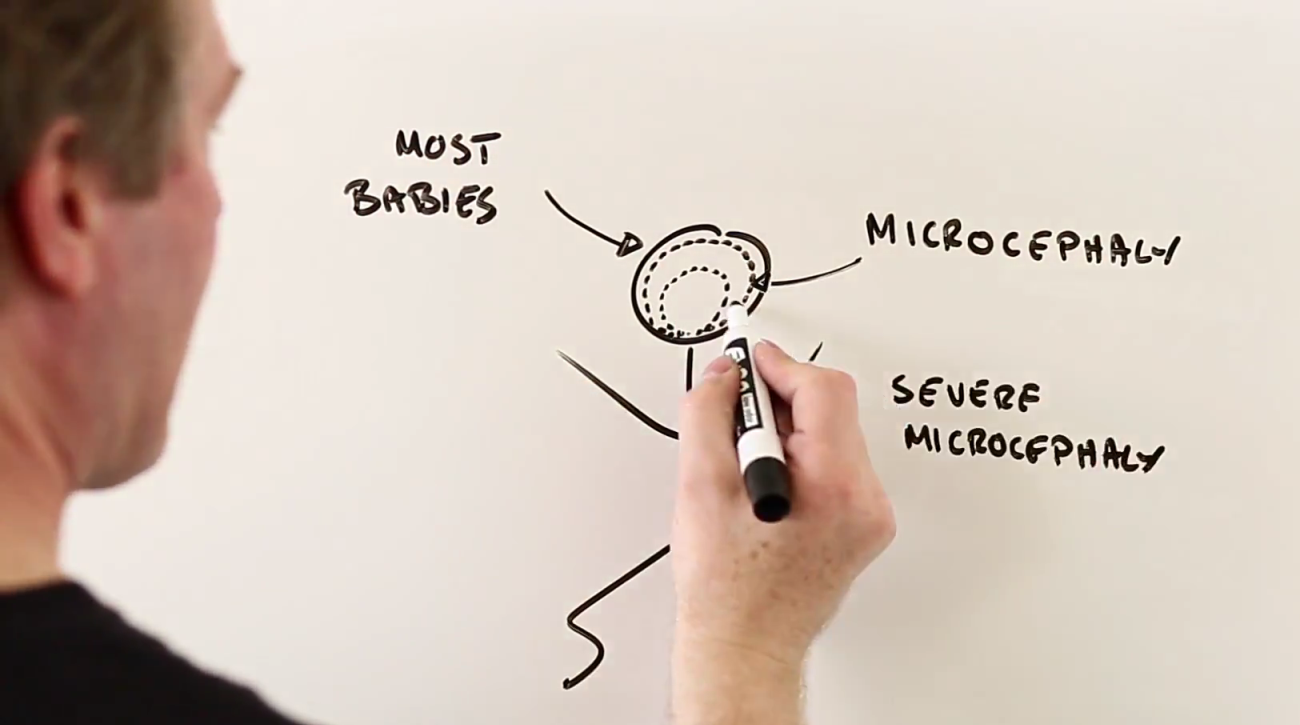A new, engaging and informative video on Zika, its transmission and prevention, is now online. Produced with the assistance of two doctoral students from the George Washington University Milken Institute School of Public Health’s Department of Environmental and Occupational Health (EOH), the video aims to address the fear and potential for misinformation that are currently circulating more rapidly than the mosquito-transferred virus.
The virus is currently concentrated in Brazil and Central America, and likely to spread beyond. A pregnant woman who contracts Zika may have an increased risk for a fetal infection that leads to microcephaly, a rare neurological condition in which an infant's head is smaller than the norm. Severe microcephaly can lead to severe disabilities. Although the potential consequences of Zika have yet to be ascertained, erring on the side of caution, health experts are urging people to act as if there are sufficient risks for concern. Intended to help quell fears and offer steps to prevent transmission, the six-minute video, “Zika & microcephaly: Five things worth knowing,” is available in English, Spanish, and Portuguese.
Without sidestepping the gravity of the virus, the video is designed to be accessible to a non-scientific audience and is of considerable value in its discussion of uncertainty and precaution. Additionally, the video emphasizes the need to evaluate the credibility of information sources and includes important public health messages, like practicing safe sex and protecting oneself from mosquito bites.
Students Connect with Colleague at D.C. Forum and a Project Begins
Interested in environmental global health and environmental risk perceptions and communication, EOH Doctor of Public Health Students Ashley Bieniek-Tobasco and Deise Galan attended a Future Tense panel discussion on the Zika virus hosted by Slate, New America, and Arizona State University, held a short Metro ride from campus at New America’s headquarters. There the students met up with Andrew Maynard, PhD, director of the Risk Innovation Lab at Arizona State University. Maynard was also Bieniek-Tobasco’s MPH advisor at the University of Michigan School of Public Health. Maynard’s work centers on innovative solutions to thinking about, communicating and managing risk.
After the panel discussion that covered many aspects of the emerging public health concern, Bieniek-Tobasco and Galan conversed with Maynard. Bieniek-Tobasco expressed interest in collaborating with him again. Soon after, Bieniek-Tobasco and Galan were part of a small team creating Risk Bites videos on the Zika Virus. Established by Maynard, Risk Bites is a YouTube channel dedicated to providing risk information to the public in an appealing and understandable format.
Applying Honed Research Skills in a Creative and Challenging Way
With an urgent need to share information, the team quickly prepared the content. Creating the video and its translations was an iterative process directed by Maynard: drafting a script, creating illustrations, recording the drawings on a whiteboard, and overlaying narration. Maynard developed a draft script for the team to review. Bieniek-Tobasco assisted with pulling together data and consulted on several risk communication aspects of the video. Galan, originally from Brazil, assisted with the translation of the Portuguese version of the video. After a few rounds of review and contributions to draft scripts and videos, Maynard produced the final videos, with Galan providing narration in Portuguese.
Reflecting on the process, Bieniek-Tobasco says, “The video and its translations offered an opportunity to step outside of the research zone and apply the skills we’ve developed as students of public health to a project that aims to connect directly with the public. Additionally, working under the environment of an emerging public health concern has its challenges because there is still a lot of uncertainty about the link between exposure to Zika virus and health effects.”
The students hope the video and its translations are the start of more teamwork across institutions. Galan says, “We believe it is very important to be involved with projects outside our school, where we can bring our own experience and a new perspective to the table to have an impact.” After this productive and valuable experience, Bieniek-Tobasco and Galan look forward to future collaborative opportunities.


